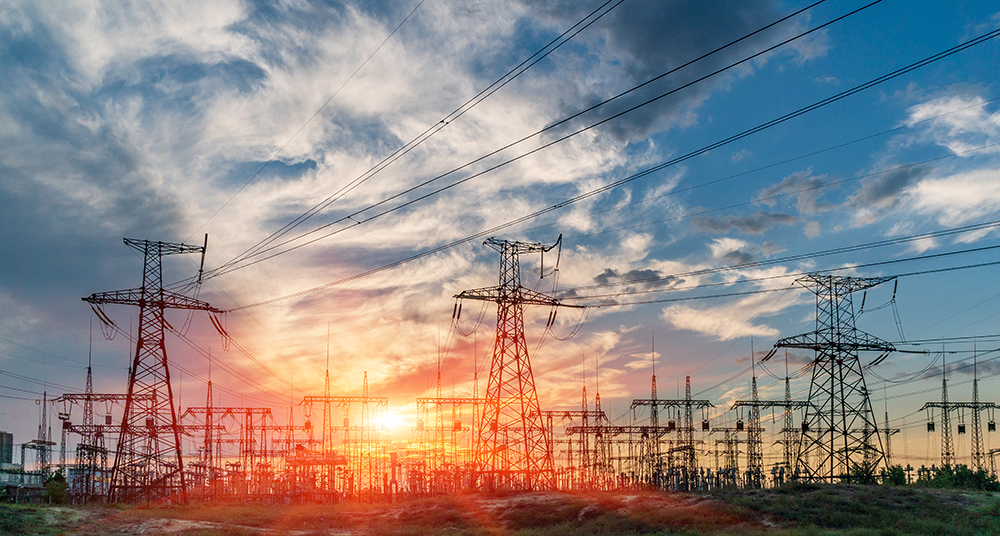
Much of the U.S. energy system was built in the last century, with most electric transmission and distribution lines constructed in the 1950s and 1960s with a 50-year life expectancy.
More than 640,000 miles of high-voltage transmission lines in the lower 48 states are at full capacity, and substantial investment is required to ensure long-term capacity and sustainability.
Without replacing or at least improving aging equipment, capacity bottlenecks, increased demand, and stronger storms due to climate change mean that Americans will experience longer and more frequent power interruptions, if nothing is done.
Alternative, sustainable energy is a two-edged sword: with reduced electric demand, changing delivery costs, and new regulations, some energy consortiums, utilities, and government agencies have been paralyzed. Electricity and oil and gas delivery via well-maintained wires and pipelines are still critical to efficient and secure supply chains.
What is the Industrial Internet of Things (IIoT) role in resolving this crisis? What is effectively being achieved – and what are the last-mile issues that remain unresolved? Also, what are the case study results of IIoT’s deployment within the U.S.’s aging enterprise infrastructure?
Jory Schwach, founder and CEO of IIoT’s Andium, has taken on this challenge. IIoT expert and serial entrepreneur (founder/CEO of MeshMe and CEO of GlobalRim and frequent speaker on the topic of “America’s Crumbling Infrastructure”), says, “Unfortunately, we cannot snap our fingers to replace our aging infrastructure overnight. In the face of that reality, we must address our aging infrastructure with practical solutions. IIoT, when applied properly, can help extend the life and capabilities of our existing infrastructure, as well as alert us to failure points before they happen.”
Andium, based in NYC, is an end-to-end industrial IoT platform that brings intelligent software services down to the device layer, and says the offer “industries more flexibility, reliability, and scalability in monitoring and controlling their operations, regardless of cloud connectivity.” Established a few years ago, their specific services include tank telemetry, flare tracking, advanced object detection, and remote connectivity.
Schwach sees cybersecurity as one of the greatest challenges, saying, “A major risk posed by our aging infrastructure is security vulnerabilities. If an old piece of equipment is connected to any sort of network, it is an easy target for someone determined enough to access or attack it. IIoT, by the very act of connecting devices to a network, can sometimes introduce security risks of its own. However, if an IIoT device is equipped with the proper, on-device encryption, and communicates in an encrypted fashion, those devices can act as front-line protection against someone unauthorized from accessing an older piece of equipment or system.”
Sustainability and scalability are also key, Schwach explained. “Aging infrastructure also brings about sustainability challenges. Take manufacturing, where aging equipment can result in things like high-energy consumption, machine failures, and material waste. By adding capabilities such as equipment monitoring and predictive maintenance, IIoT can help prolong the life of equipment and increase uptime, ensuring more efficient production and less waste.”
He sees the falling costs of sensors as a huge plus in the evolution of IIoT. “IIoT’s positive impact on sustainability extends far past manufacturing, even bringing sustainability gains to the fossil fuel industry. Imaging sensors, for instance, can alert companies to oil tanks that are at risk of overflow or identify black smoke onsite, allowing companies to address issues before they escalate into major problems. This increased visibility also reduces the need for personnel to regularly travel to remote sites. Instead, workers only need to travel out to sites when a potential issue is detected, decreasing their carbon footprint.”
Schwach explained that applying new technology to aging, and large infrastructure can be challenging because of integration hurdles. “For widespread IIoT adoption in older sectors, low-cost and ease of implementation are key, which are virtually impossible without lowering integration barriers. IIoT advances, such as increased on-device intelligence and flexibility with edge computing, help overcome integration challenges by allowing devices to monitor aging infrastructure without having to tie into old systems.”
The virtualization and open nature of modern IIoT software, which can run on virtually any hardware, allows for more portability, as the software can operate on whatever hardware most easily integrates with the infrastructure in question.
He recognizes the challenges energy executives are up against. “Even forward-thinking executives will avoid adopting IIoT if costs are high, and implementations are complex. Adoption requires operational feasibility, which only comes with cost-effective and relatively easy implementations.”
As new investment in infrastructure emerges, following on the COVID-19 pandemic, having connected field service options is also increasingly important. “IIoT can be now implemented with little in the way of infrastructure requirements, keeping costs down, and implementations simple. An end-to-end managed IIoT platform that makes it possible to monitor, manage, and maintain infrastructure, reducing the costs of field service, can lead to an almost immediate ROI when the right technology is incorporated into an aging infrastructure environment.”
Arti Loftus is an experienced Information Technology specialist with a demonstrated history of working in the research, writing, and editing industry with many published articles under her belt.Edited by
Ken Briodagh





